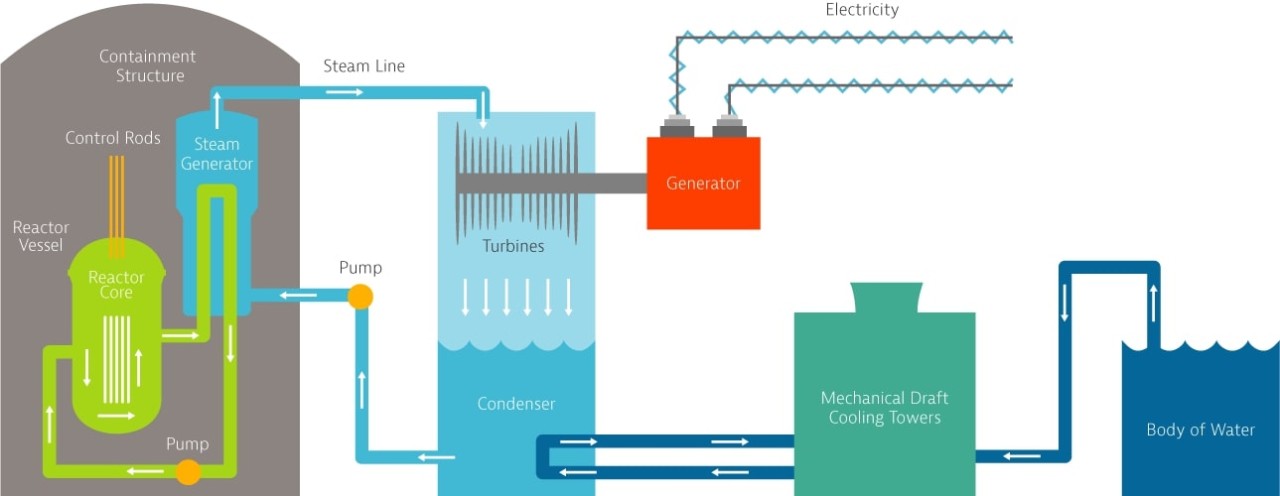
Plant Farley: Joseph M. Farley Nuclear Power Plant
Plant Farley, located near Dothan in southeast Alabama, is owned by Alabama Power and operated by Southern Nuclear. It is one of three nuclear facilities in the Southern Company system. Plant Farley began commercial operation in 1977 and produces more than 10% of the state’s total power.. Since its beginning, Plant Farley has generated more than 350 million megawatts, which is enough electricity to supply every Alabama Power residential customer for 25 years. Since 1992, the plant has been recognized as a certified wildlife habitat by the Wildlife Habitat Council. More than 800 people including engineers, mechanics, control room operators, chemists, electricians, security officers and others oversee Plant Farley’s safe and reliable operations 24 hours a day, every day of the year.
Location:
Columbia, Alabama
Reactor Type:
Westinghouse 3-loop Pressurized Water Reactor
Power Output:
Approximately 1,800 megawatts
Number of Units:
2
How It Works:
Plant Farley generates electricity from a process called fission, which is where the nucleus of an atom splits into smaller parts, causing a chain reaction that releases heat. Learn more about the process below.
1. Water is pumped through the reactor core, heated by the fission process, pumped through thousands of tubes in the steam generators and back to the reactor in a closed loop.
2. Cooler water in the steam generator comes in contact with the hot tubes and turns to steam.
3. The steam goes to the turbine and spins the turbine blades.
4. The turbine spins the electric generator to produce electricity.
5. The steam goes to the condenser where it turns to liquid again to continue the cycle.
6. The water that circulates through the condenser is cooled by large cooling towers.
Note: The three water systems used to generate electricity are separate and don’t mix with each other.
Who was Joseph Farley?
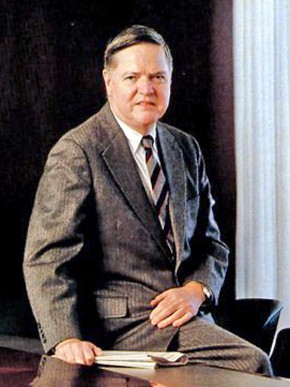
Joseph Farley (1927 - 2010) was a distinguished leader in the nuclear industry, serving as CEO of Alabama Power from 1969 to 1989 and subsequently as the first CEO and president of Southern Nuclear. Born in Birmingham, Farley attended Birmingham-Southern College before earning an engineering degree from Princeton University in 1948. He further pursued graduate studies in business at the University of Alabama and obtained a law degree from Harvard Law School in 1952. Following his graduation from Harvard Law School, Farley joined the law firm of Martin, Turner, Blakey & Bouldin. In 1965, he was recruited by Alabama Power as executive vice president. Four years later, he became president of Alabama Power, holding the position for two decades.
In 1989, Farley transitioned to oversee the creation of Southern Company’s nuclear subsidiary, Southern Nuclear Operating Company, where he served as its first CEO and president. During his tenure at Southern Nuclear, Farley frequently provided testimony to Congress on nuclear-related issues, gaining recognition and esteem from regulatory bodies, legislators and utility executives.
On a national level, Farley chaired the board of the Institute for Nuclear Power Operations (INPO), helped form the World Association of Nuclear Operations (WANO), chaired the American Nuclear Energy Council and received the nuclear industry's top honor, the William S. Lee Award.
To commemorate Farley's numerous achievements, Plant Farley is named in his honor.
Schedule a Visit to Plant Farley
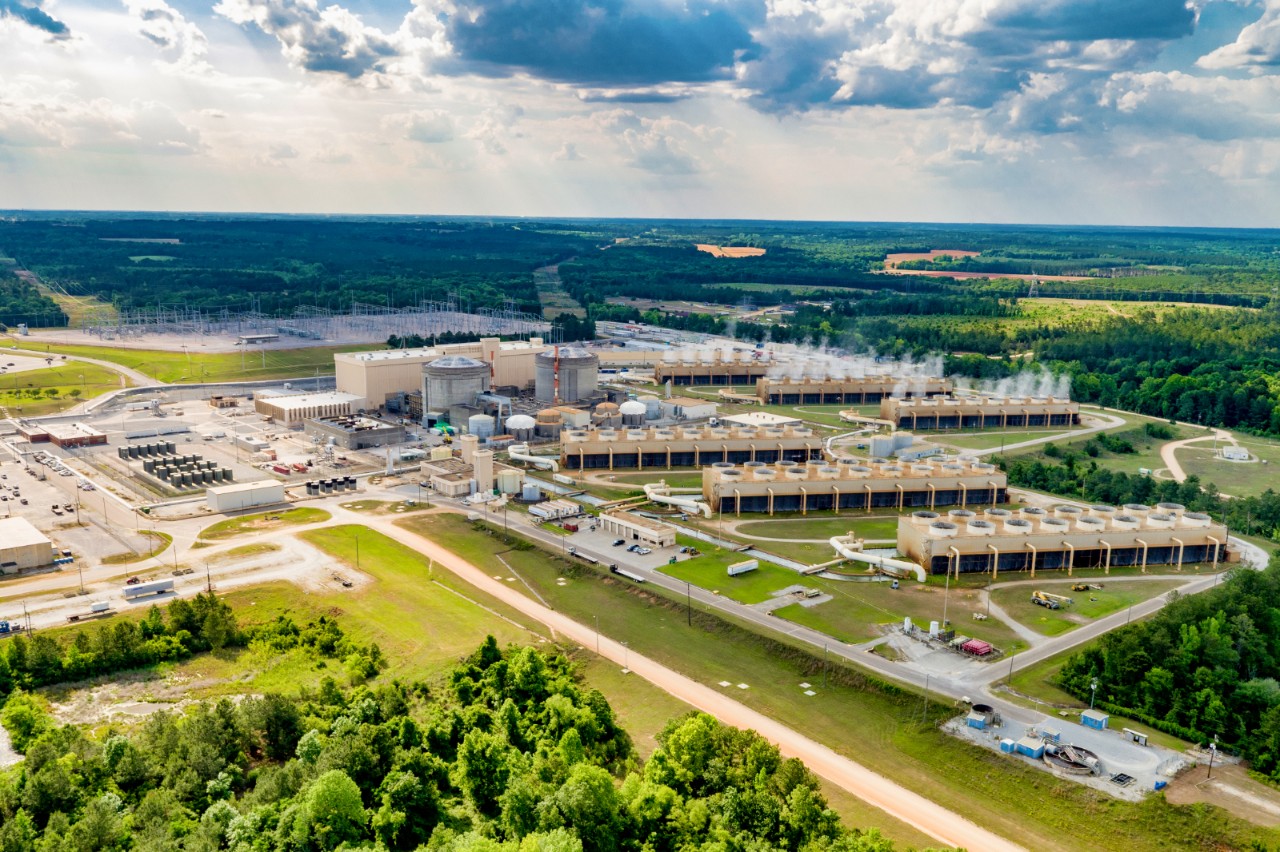
To schedule a site visit to Plant Farley or an informative presentation for your school group, civic group, or other organization, please call the Farley Energy Education Center at 334-661-2861.
Our Neighbors
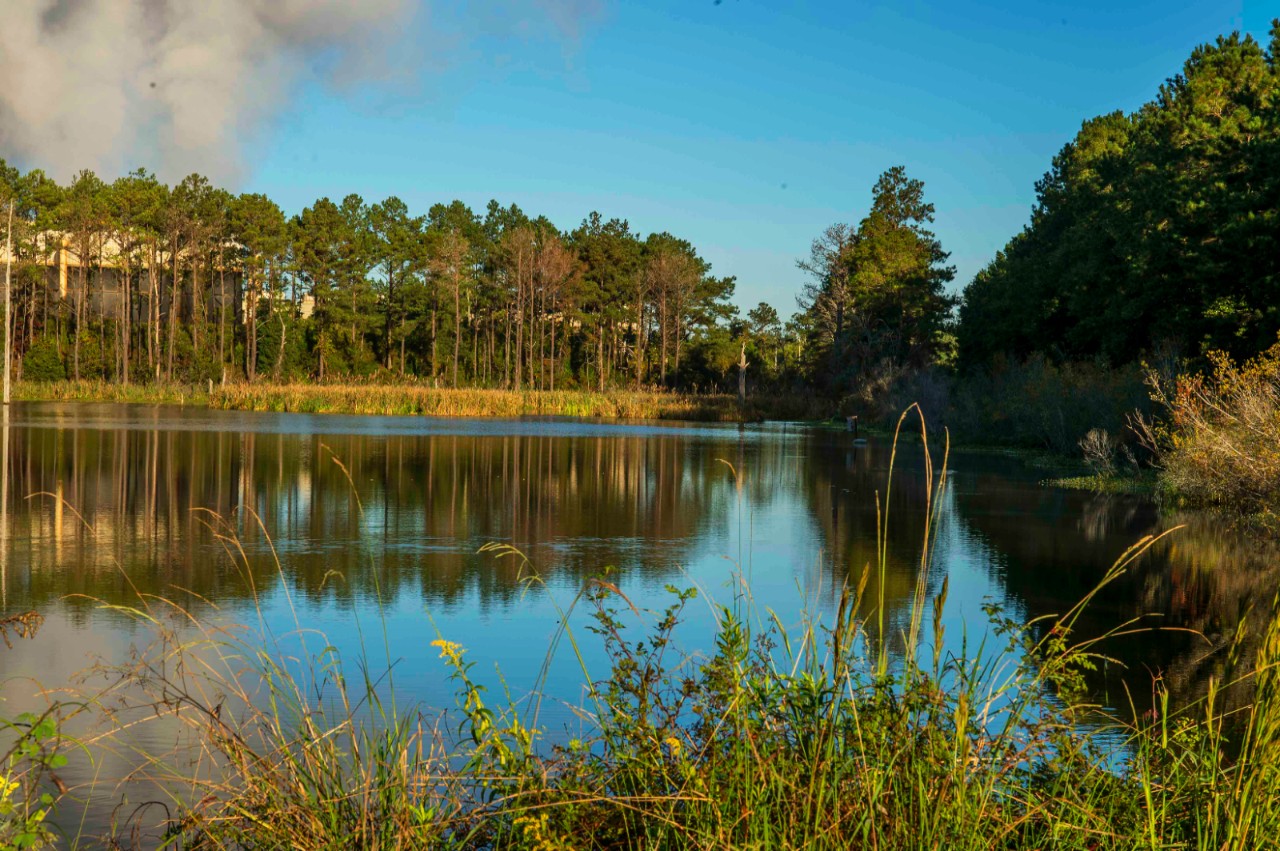
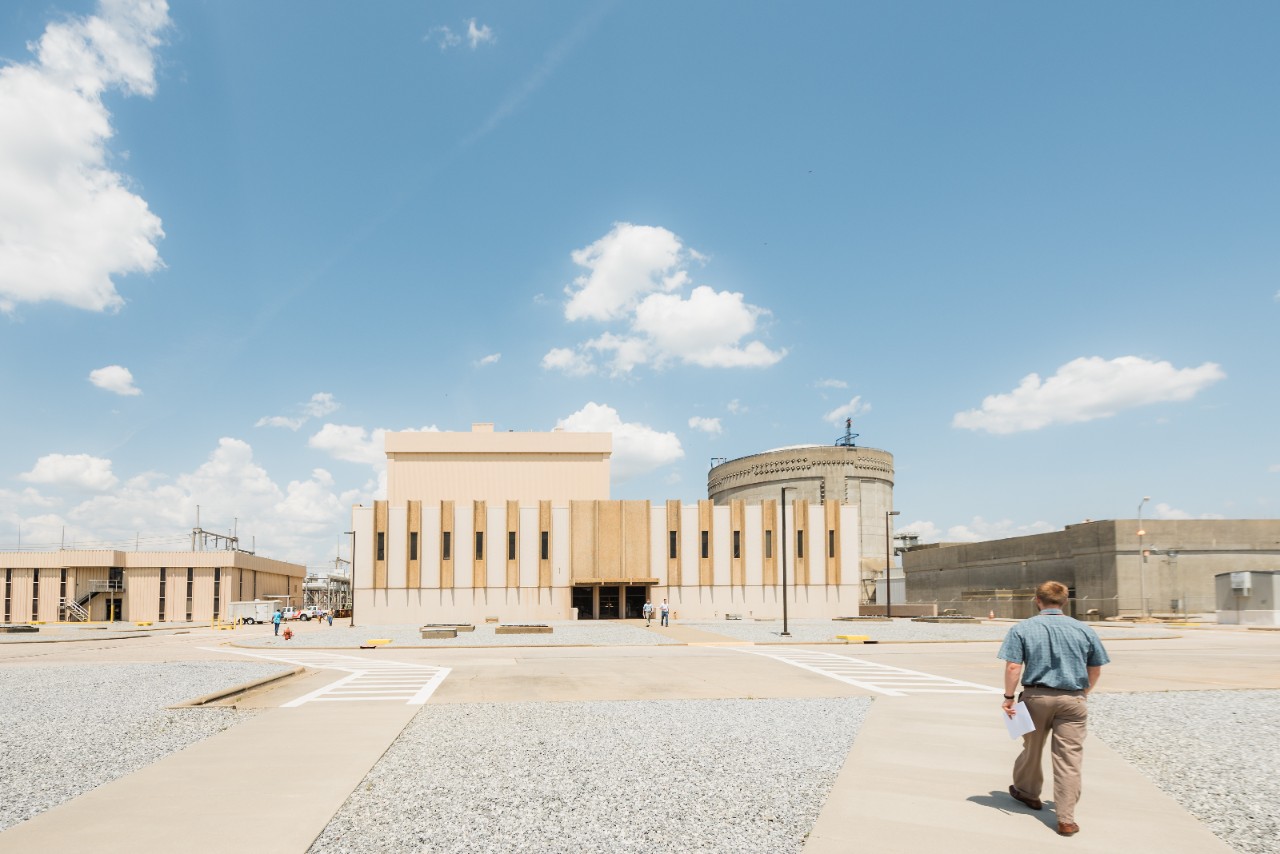
Emergency Planning, Stay Prepared
Southern Nuclear’s priority is the health and safety of our plant neighbors. If you reside within the 10-mile emergency planning zone around Plant Farley in Alabama or Georgia, we want you to be informed about the types of emergencies that can occur, how you can stay up to date, and how to protect your family.
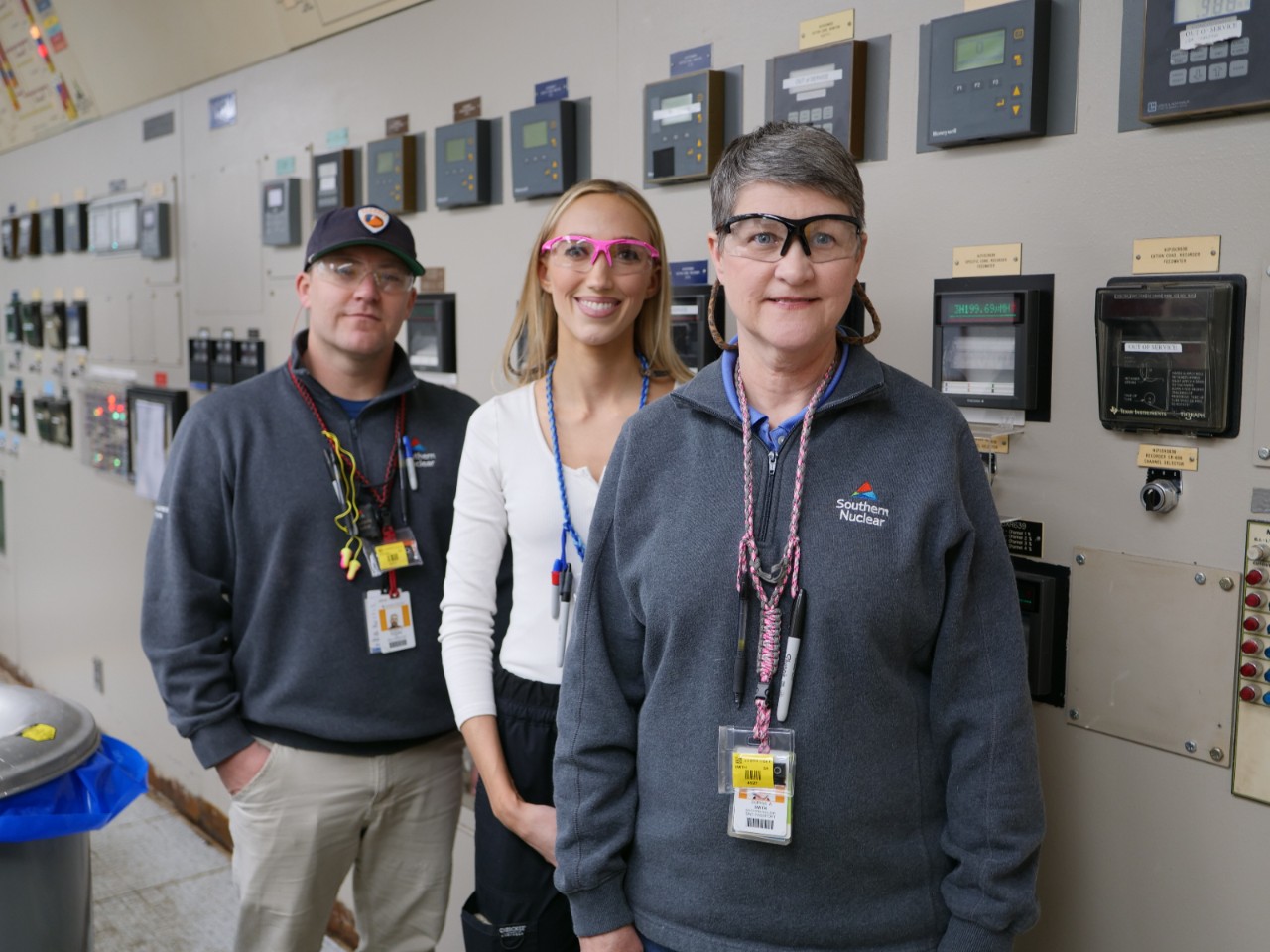
Careers at Farley Nuclear Plant
Work for the nation’s leader in nuclear energy and an innovator in advanced nuclear technologies. The operation of our Farley Nuclear Station requires a broad range of professionals with a variety of experience levels. Visit our Careers page to learn about professional development, search open positions or create a candidate profile.
FAQs About Plant Farley
Where is Farley Nuclear Power Plant located?
The Joseph M. Farley Nuclear Plant is located along the Chattahoochee River in Houston County near Dothan, Alabama.
What type of reactors does Plant Farley use?
Plant Farley uses two pressurized water reactors.
How much power does Joseph M. Farley Nuclear Plant generate?
Plant Farley has a total generating capacity of approximately 1,800 megawatts (MW), with each reactor able to produce about 900 MW.
Are Plant Farley and other Southern Nuclear power plants an important energy resource?
Like ours, nuclear power plants in general have minimal impact on the environment and can produce huge amounts of carbon-free energy around the clock. Their ability to generate consistent power contribute not only to reducing greenhouse gas emissions but also to strengthening U.S. energy independence. This makes nuclear energy a strategic and vital resource for the country's future.
What safety systems are in place at Farley Nuclear Plant?
Plant Farley and all nuclear power plants are designed with defense-in-depth safety systems. This means there are multiple systems, passive and active, in place to protect the reactor and the surrounding public.
Passive systems include physical barriers that would restrict the spread of contamination outside the primary systems in the unlikely event of an emergency. These include such barriers as the fuel's zirconium alloy cladding, the thickness of the reactor vessel and the concrete containment surrounding it.
Active systems are designed to ensure continuous core cooling and safe plant shutdown in the unlikely event of an accident. Some of these include the reactor protection system designed to automatically shut down the reactor if needed, multiple core cooling systems designed to replenish cooling water in the reactor if normal cooling water is lost, and containment isolation systems that can close all openings from the containment building to the outside.
Additional redundant systems are in place to detect and mitigate any condition that could pose a threat the public.
How much radiation am I exposed to if I live near Plant Farley?
A person living within 50 miles of a nuclear power plant receives an average of about 0.01 millirem of radiation per year. To put that in perspective, the average person in the U.S. receives a radiation dose of 620 millirem per year. Half of that dose comes from natural sources, like bananas or granite countertops, while the other half comes from manmade sources like X-rays. For example, a routine chest X-ray is about 10 millirem of radiation, while a cross-country round-trip flight is 5 millirem. Federal regulatory agencies carefully set and enforce limits to protect the public, the environment and plant employees.
Does Farley Nuclear Plant help protect the local environment?
Since 1992, Plant Farley has been recognized as a certified wildlife habitat by the Wildlife Habitat Council. Situated on 1,850 acres, only about 400 acres are dedicated to producing electricity, while the remaining 1,450 acres fall under a detailed land management plan that outlines strategies for protecting and enhancing the surrounding animal and plant life.
